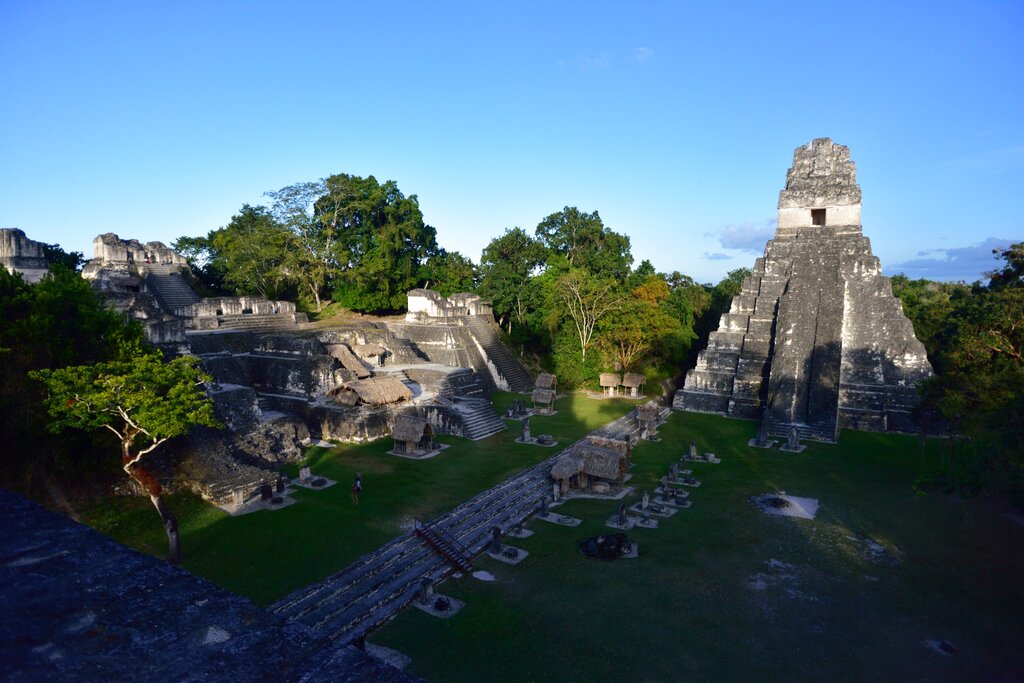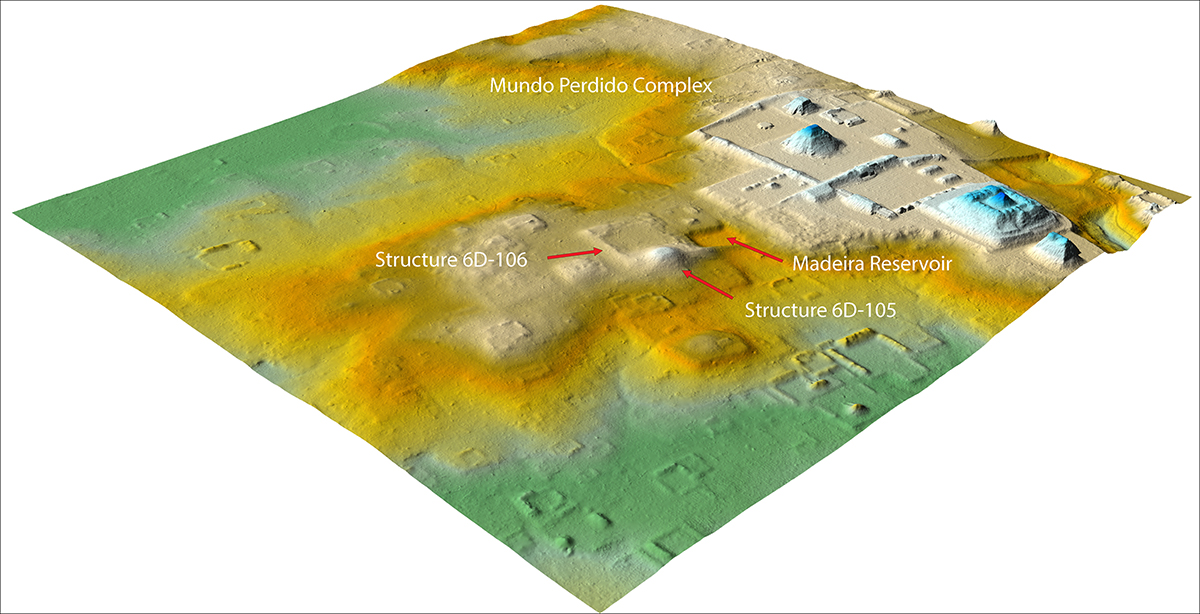 A view from Temple II in Tikal National Park, Guatemala, overlooking Temple I and the Great Plaza, 2015. Photo Alex Milan Tracy/Sipa via AP Images
A view from Temple II in Tikal National Park, Guatemala, overlooking Temple I and the Great Plaza, 2015. Photo Alex Milan Tracy/Sipa via AP Images
Archaeologists have discovered a new neighborhood in the ancient Maya city of Tikal. The site located in present-day Guatemala has been the subject of thorough excavations since the 1950s, but a new study published in Antiquity reveals a crucial lost section of the city.
Using light detection and ranging software known as lidar, researchers found a previously overlooked complex in what was thought to be an area of naturally occurring hills. To their surprise, the uncovered structures look like a small-scale replica of the citadel in the ancient Mesoamerican city Teotihuacan.
Located north of present-day Mexico City in central Mexico, Teotihuacan was an urban center of power in the Americas and one of the largest cities in the ancient world, with a population of over 100,000. Before Teotihuacan took control of Tikal in 378 C.E., the two cities were in contact for several centuries and frequently traded with each other. The Teotihuacan general Sihyaj K’ahk’ eventually overthrew the Maya ruler of Tikal and several other cities in the region, which led to rapid expansion and a consolidation of power under Aztec rule.
Stephen Houston, an anthropologist at Brown University and researcher on the study, notes that subsequent excavations have raised questions about the imperial influence of Teotihuacan on Tikal. “The architectural complex we found very much appears to have been built for people from Teotihuacan or those under their control,” Houston said in a statement. “It suggests something more heavy-handed, like occupation or surveillance.”
The Tikal neighborhood was designed to replicate Teotihuacan’s citadel, including construction with mud plaster in lieu of traditional Maya limestone, Teotihuacan-style cornices and terraces, and a north-facing orientation of the buildings. “It almost suggests that local builders were told to use an entirely non-local building technology while constructing this sprawling new building complex,” Houston said.
The idea that Teotihuacan had only light or indirect contact with the Maya has become “increasingly implausible,” Houston Houston in an email to ARTnews. “We had known before about contact between Teotihuacan and this distant city,” he continued, “[but] now it seems what might have been the royal or imperial palace of Teotihuacan was being replicated as part of a planned precinct of Tikal.”
The citadel, or ciudadela, is about 30 percent smaller than the one at Teotihuacan. It has the same north-south wings on the eastern pyramid, an enclosed square plaza in front, and a reservoir (called the Madeira) instead of a canal to the north. Its northeast orientation mirrors the urban grid at Teotihuacan.
 Lidar view of the Teotihuacan Complex at Tikal. Figure T. Garrison/PACUNAM
Lidar view of the Teotihuacan Complex at Tikal. Figure T. Garrison/PACUNAM
“The main pyramid of the building at Tikal is in Teotihuacan-style, and buildings nearby use a new form of construction, of packed earth and mud, not seen before,” Houston explained. Additionally, “The layout of this new construction, even its relation to water supplies and a road to the front—all resemble Teotihuacan.”
Through excavations led by Edwin Román Ramírez at the University of Texas at Austin and a team of Guatemalan archaeologists, six construction phases have been identified dating to the Early Classic period from 300 C.E. to 550 C.E. Artifacts found nearby include Maya flint projectile points, along with green obsidian points common in Teotihuacan, incense burners in Teotihuacan style, and two human sacrifices similar to warrior burials at the Temple of the Feathered Serpent in Teotihuacan.
Further analysis will continue to be done on the site, as well as determining the origin of the human remains. This fall, excavations will resume at Tikal under the supervision of Román Ramírez.
“People are quite interested in the process of colonization and its aftermath, and in how our views of the world are informed or distorted by the expansion of economic and political systems around the globe,” Houston said. “Exploring Teotihuacan’s influence on Mesoamerica could be a way to explore the beginnings of colonialism and its oppressions and local collusions.”
Source link : https://www.artnews.com/art-news/news/lost-maya-neighborhood-replicates-teotihuacan-citadel-1234605214












